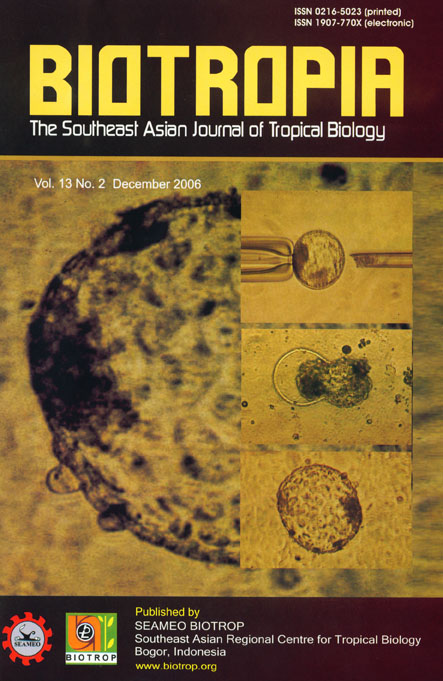
Tags
PREOVULATORY CHANGES AND OVULATION IN CATTLE UNDERGOING SPONTANEOUS OR CLOPROSTENOL-INDUCED LUTEOLYSIS
Content Language : English

The follicular population, diameter of the ovulatory and subordinate follicles, corpus luteum (CL) size, concentration of progesterone and estradiol-17p were studied following spontaneous or cloprostenol-induced luteolysis. A total of 14 heifers received cloprostenol treatment on Day 9-11 of the cycle to synchronize their estrus. Subsequently, they were divided into two groups, one group which was allowed to undergo spontaneous luteolysis and the other group in which estrus was induced from days 9 to 12. In the induced-group, transrectal ultrasonography were performed daily started two days prior to injection until the onset of estrus. In the spontaneous-group, ultrasonography was done daily from day 15 until the onset of estrus. In both groups scanning were performed every 4 h from the onset of estrus until ovulation was ascertained. Small (SF, 2-4 mm), medium (MF.5-9 mm ) and large (LF,>9mm) size follicles were recorded. The diameter of largest and subordinate follicles were measured and blood were drawn from jugular vein at approximately around scanning and the plasma were used for measurement of progesterone (P4) and estradiol-17p (E2) concentration. There was no different in term of number of SF, MF and LF (P>0.05) between the two groups. Similarly, no effect of side (left vs. right ovary) and CL position (ipsi- vs contralateral to the ovary) was found (P>0.05). However, it was demonstrated that mean number of ovulatory follicles was higher (PO.01) in the spontaneously ovulating group while the regressing-CL size was larger in the cloprostenol induced animals (P<0.05). Occurrence of time of ovulation in relation to initial signs of estrus was observed in both groups of animals. This variation could be attributed to the existence of a large preovulatory follicle which enhanced the time ovulation. Conversely, when subordinate follicles showed grow up and replace the large follicle the interval from heat to ovulation was prolonged. Progesterone experienced a more steep decrease than the spontaneous group of animals and a positive correlation was observed between the diameter of CL and the P4 concentration. For E2 there was a positive correlation between the E2 and follicular size. It is concluded that the variation in follicular among animals contributed to the variability in timing of ovulation, particularly prostaglandin-induced animals. The diameter of ovulatory follicle in spontaneous group was larger as compared to induced-group.
Link

This work is licensed under a Creative Commons Attribution-NonCommercial-NoDerivatives 4.0 International License.
